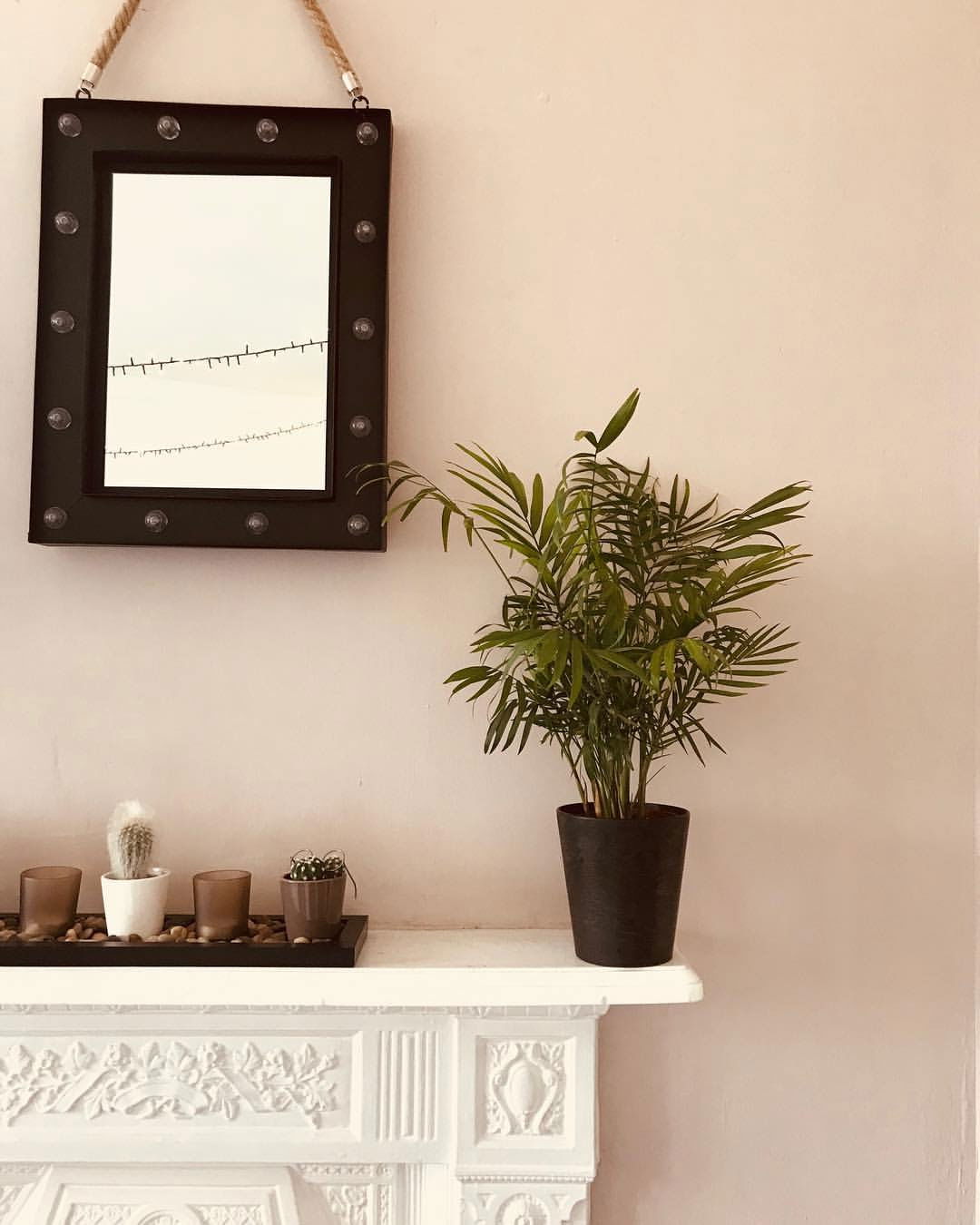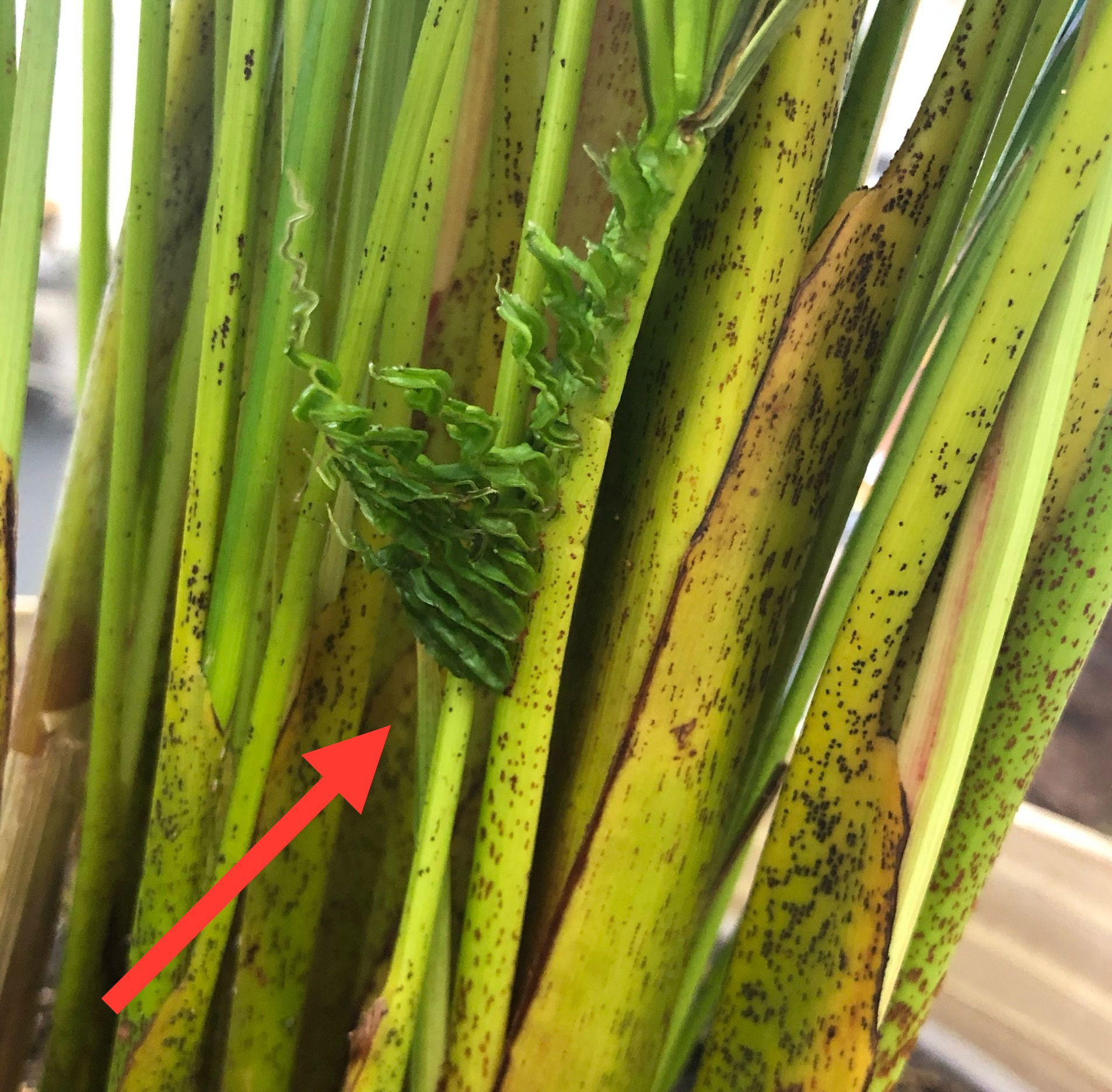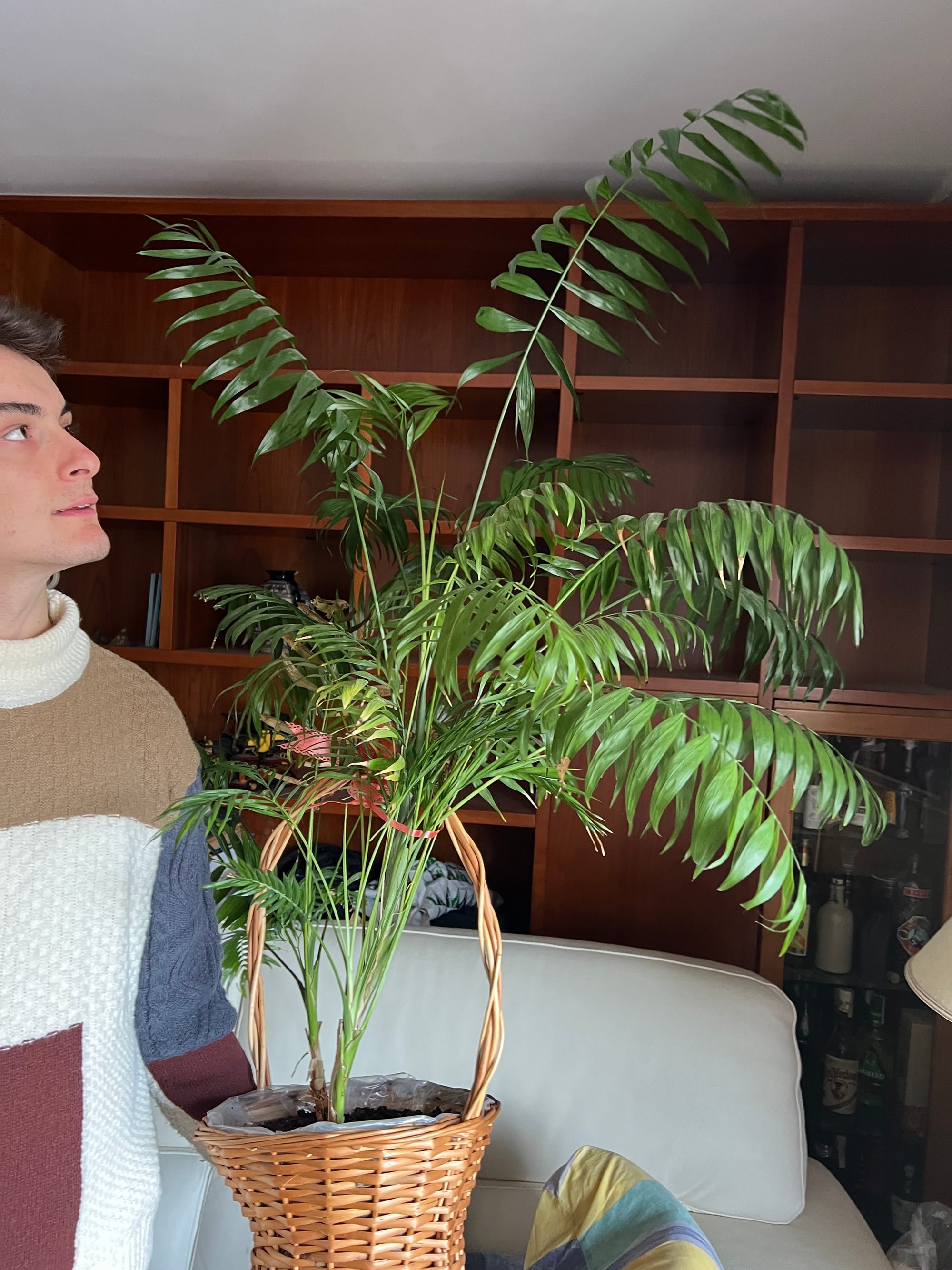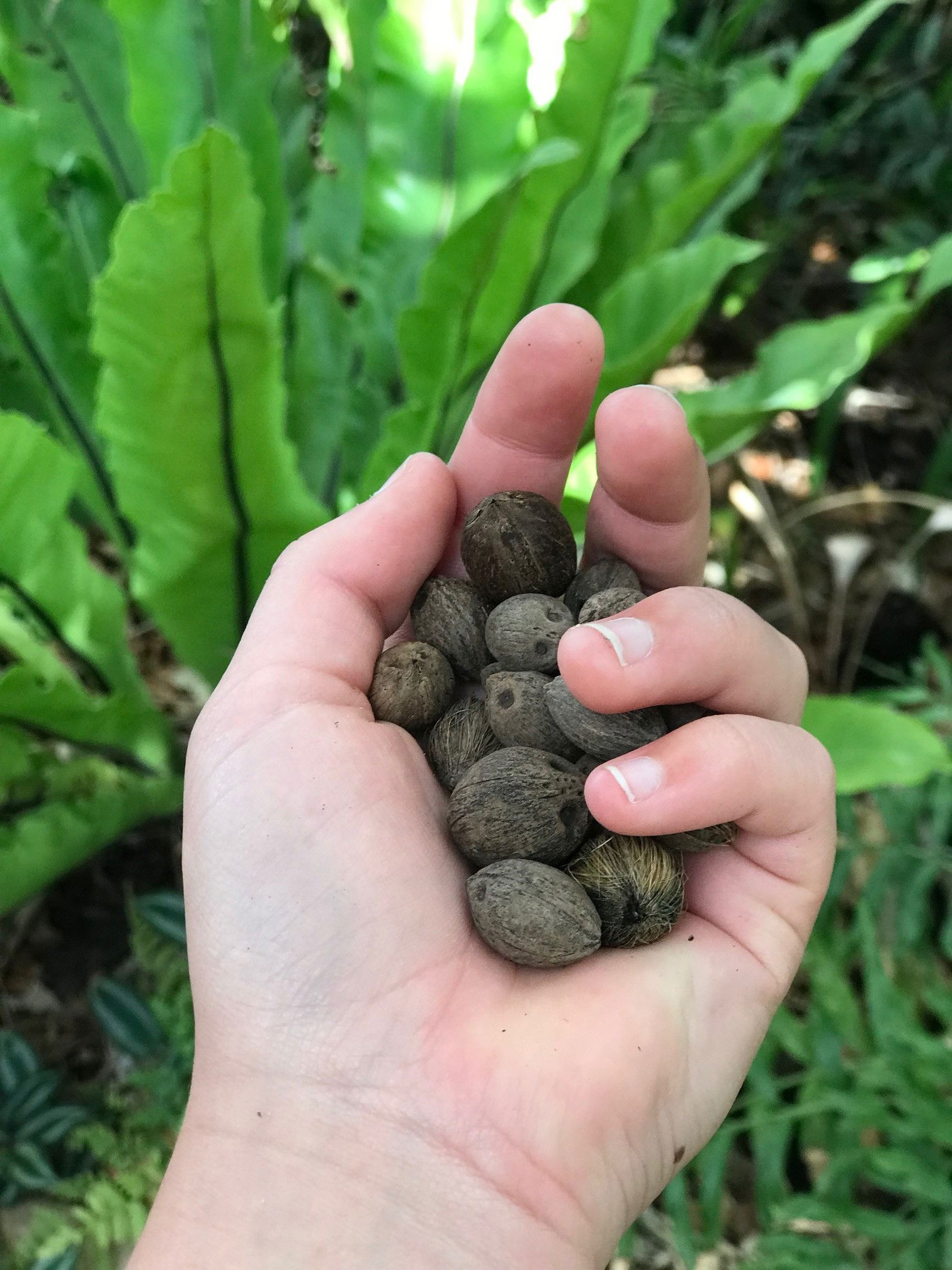
Chamaedorea elegans
Contents
- Top Tips
- Location, Water, Humidity & Fertilisation
- Common Issues
- Origins, Temperature, Propagation, Repotting & Toxicity.
Need the answer to a specific plant query? Book a 1-to-1 video call with THE HOUSEPLANT DOCTOR™, the website's friendly author, to overcome and address your niggling problem! Available on iMessage, WhatsApp, Facebook Messenger & more.
Top Tips & Info
- Care Difficulty - Easy
- Bright, indirect light is best; however, Parlour Palms will still do considerably well in shadier locations, too.
- Allow the top third of the soil to dry out in between waters, reducing this slightly further in the autumn and winter.
- Create a pebble tray to maintain high humidity while the heaters are operating.
- Fertilise using a 'Houseplant' or 'Palm' labelled feed every four waters in the spring and summer, reducing this to every six in the colder months.
- Repot every two or three years with 'Houseplant Compost'. Be sure to respect the roots as transplant shock is a big issue that could cause death in some cases.
- Keep an eye out for Spider Mites which will create small white webs along the ridges of the under-leafs.
- 'Tot' specimens in a 5cm pot (available at Blue Diamond stores in the U.K.) are perfect for tropical-themed terrariums or displays due to the slow growth habits!
- Parlour Palms are highly air-purifying according to the 1989 'Clean Air Study' conducted by NASA. They'll absorb the five most common airborne toxins in a domestic household, including Benzene, Formaldehyde & Ammonia.
Location & Light - 🔸🔸
Most positions around the house will be tolerated, as long as they don't receive intense sunlight throughout the day. If your specimen displays a 'washed out' appearance, this most likely is due to a mixture of too much sunlight and not enough water, especially if it has dried leaf-tips.
The amount of light and current season of the year will directly govern the frequencies of waters per month. Specimens placed in darker areas must be kept on the drier side to life, whereas brighter locations will require more soil moisture to lubricate photosynthesis.
The best environment for this palm is in a semi-heated conservatory (minimal sunlight), within two metres of a north-facing window, or two metres away from an east, south or west-facing window.
Water - 🔸🔸
For those who are forgetful waterers, this species of palm is the one for you. Apart from its easy-care nature, they have the ability to withstand short lived droughts and partial neglect. Watering from the top is best, using either lukewarm tap water or fresh bottled water for best results. Keep the soil evenly moist, allowing the top third of the soil to dry out. Under-watering symptoms include yellow or pale-looking fronds, little to no growth, brown crispy new growth and gradual decline. If your Parlour Palm is situated in a sun-filled position (unadvised), only let around the top quarter of the soil dry out in between waterings. Over-watering symptoms include yellowed leaves, little to no growth and death; these issues are usually due to a lack of heat or sunlight, being over-potted, an incorrect soil type or waterlogging. Root rot is pretty standard for all palms, but it does seem to be less common with this species.
Humidity - 🔸🔸🔸
Parlour Palms love a humid spot, so introducing a pebble tray whilst the heaters are operating will ensure adequate moisture around its foliage. An under-humid location will cause the leaf-tips to dry and brown over - an issue that tends to worsen in the height of winter.
Always keep the palm at least four metres from an operating heat source due to the negative effects it has on transpiration and therefore leaf hydration.
Fertilisation - 🔸🔸
Feed every four waters during the growing period and every six in the autumn and winter, using a 'Houseplant' or 'Palm' labelled fertiliser. Never apply a 'ready to use’ product into the soil without a pre-water first, as it may burn the roots and lead to yellowed leaves.
Common Issues with Palms
Root rot is a common issue with specimens sat in too moist or waterlogged soil for long periods. Symptoms include rapidly yellowing leaves, stunted growth and a rotten brown base. Take the plant out of the pot and inspect health below the soil line. If the roots sport a yellow tinge, you're good to go, but if they're brown and mushy, action must be taken immediately. More information about addressing root rot can be found on this link.
Yellowing lower leaves (closest to soil) could be a sign of over-watering, but equally is a byproduct of maturity. If the older leaves rapidly become yellow in quick succession, over-watering could be to blame. People don't realise that a plant's root system needs access to oxygen too; when soil is watered, the air will travel upwards and out of the potting mix. A lack of accessible oxygen for the roots will cause them to subsequently breakdown over the oncoming days. Click on this link to learn more about root rot and how to address it.
Pests could arise at any time, with infestations starting from the original nursery or via contamination in your home. In most cases, pest infestations will be most visible on the oldest leaves. Spider Mites and Mealybugs tend to be the usual inhabitants, with the first being minute and almost transparent, roaming the leaves in search of chlorophyll and a site to hide its eggs. The latter, however, will stand out much more, with white cottony webs developing across the foliage and stems. Thoroughly check the plant's cubbyholes before giving it the all-clear, or click on the appropriate links to learn more about eradicating these issues.
Too low humidity can cause browning leaf tips with yellow halos. Although this won't kill your specimen, you may want to increase the local moisture to prevent the new growth from adopting these symptoms. Mist or rinse the foliage from time to time and create a humidity tray whilst the heaters are active to create a stable environment for your specimen. Note: Small browned leaf-tips are a natural part of a frond's lifecycle. As long as the plant is still growing healthily, don't worry!
Transplant shock is a big issue when it comes to heavy-handed repots. Give the plant a good soak 24hrs before the action and never tinker with the roots, unless it has been affected by root rot. Typical signs of transplant shock are largely similar to under-watering, with wilting, yellowing leaves and stunted growth among the most common symptoms. Click here to learn more about addressing transplant shock, and a step-by-step guide on performing the perfect transplant.
 Remove any suckers that develop across the palm's base as they'll steal vital nutrients from the plant.
Remove any suckers that develop across the palm's base as they'll steal vital nutrients from the plant.
There are several species of Leaf-Spot Disease, (Graphiola, Botrytis, Anthracnose & Cercospora) and all of them operate in the same way. Fungi spores will land on the leaf's surface and will slowly develop along with the plant. Unfortunately, as there aren't any products that'll address the issue head-on, you can only remove the affected areas and regularly wash the leaves to limit the spread. Keep the plant away from unaffected specimens for at least a month after the last symptom.
Mould developing on the soil means two things - too little light and over-watering. Despite the harmlessness of the mould, it'll prove unsightly to most gardeners and is therefore removed once known. To remove, replace the top two inches of the soil for a fresh batch of 'Houseplant' compost. Either increase the amount of light received (no direct sunlight for the first few weeks to prevent environmental shock) or decrease the frequency of waters slightly. If the mould is accompanied by yellowing lower leaves, you may also have a case of root rot.
Origins
Chamaedorea consist of around 107 species, all originating from rainforests between South Mexico and northern Honduras. The genus can be translated from Greek with chamai and dorea meaning 'ground' and 'gifts' that refers to the easy-reaching fruits. The C. elegans was first formally described in 1830 by Carl von Martius, whereas the second most popular species, the C. seifrizii was named after German/American botanist, William Seifriz, by in 1905.
 Green - C. elegans (Common Parlour Palm) Blue - C. elegans & C. seifrizii
Green - C. elegans (Common Parlour Palm) Blue - C. elegans & C. seifrizii
Temperature
12° - 30°C (54° - 86°F)
H1b (Hardiness Zone 12) - Can be grown outdoors during the summer in a sheltered location with temperatures above 12℃ (54℉), but is fine to remain indoors, too. If you decide to bring this plant outdoors, don't allow it to endure more than an hour of direct sunlight a day as it may result in sun-scorch. Regularly keep an eye out for pests, especially when re-introducing it back indoors.
Spread
C. elegans - 1m in height and 0.8m in width; its overall height will be reached between 5 - 10 years, with three new fronds per season. See image below of a 7 year old specimen!
C. seifrizii - 3m in height and 0.8 in width; its overall height will be reached between 8 - 15 years, with one or two new fronds per season.
 A seven-year old Parlour Palm that measures around 0.8m in height!
A seven-year old Parlour Palm that measures around 0.8m in height!
Pruning & Maintenance
Remove crispy brown leaf tips and yellowing/dying fronds or leaflets (the individual leaf blades that make up the frond) to improve its overall appearance. While pruning, always use clean scissors or shears to reduce the chance of bacterial and fungal diseases. Remove any 'suckers' (distorted basal offshoots) from the soil as they yellow and die (see two images above). Any fronds that develop brown spots and marks on its leaflets should also be pruned off, as the abnormality may develop across to other non-affected areas.
Note: Do not prune into stem as most indoor palms will only have a primary node and therefore won't be able to regrow.
Propagation
Via Seed & Division.

Seeds (Easy to Moderate) - Soak the seeds in lukewarm water for around 24hrs in a dark location, preferably on top of an operating radiator. The best soil to use is a 'Houseplant' labelled potting mix, however, multipurpose compost with added perlite and sand is just as good. Set the seeds around an inch into the potting mix, resisting the temptation to compact the soil. Maintain evenly moist soil and allow the excess water to freely drain from the pot's base to prevent water-logged conditions. The ideal location for successful germination is in a bright, indirect setting with temperatures above 18℃ (64℉) with bottom-heat. Keep the pot in a transparent bag to provide a stable level of humidity, along with longer lasting soil moisture. Germination may take up to a six months, so don't discard any unsuccessful seeds until this threshold has been surpassed. Remove the bag once the seedlings produces its second leaf. Remove the bag once the seedlings produces its second leaf and then split them up into their own 3cm pots.
Division (Easy) - The best time to divide is during the repotting period in the spring or summer. For the prevention of transplant shock (common with heavy-handed transplants), water the plant 24hrs before the main event. Gently tease away some of the soil, separating a few lateral growths with healthy root systems. Do not touch, or over-finger the roots as the small hairs are very sensitive and may cause death in some instances. Place the plantlet into a moist 'Houseplant' compost and avoid direct sunlight with prolonged droughts for best results.
Flowers
Small clusters of white flowers will appear once the plant reaches maturity. Despite the plant's body being non toxic, the berries that'll develop shortly after can be highly poisonous if eaten. On the bright side, its seeds resemble miniature coconuts that can be sown in springtime.
Repotting
Repot every two or three years in the spring using a houseplant-labelled and the next sized pot with adequate drainage. Hydrate the plant 24hrs before the tinkering with the roots to prevent the risk of transplant shock. For those that are situated in a darker location, add a thin layer of small grit in the pot's base to improve drainage and downplay over-watering. Click here for a detailed step-by-step guide on transplantation, or via this link to learn about repotting with root rot.
Book a 1-to-1 video call with THE HOUSEPLANT DOCTOR™ if you'd like a personal guide to repotting your houseplant. This will include recommending the right branded-compost and pot size, followed by a live video call whilst you transplant the specimen for step-by-step guidance and answer any further questions!
Pests & Diseases
Keep an eye out for mealybugs, spider mites, scale, thrips & whitefly that'll locate themselves in the cubbyholes and undersides of the leaves. Common diseases associated with Parlour Palms are root rot, red leaf-spot, botrytis & southern blight - click here to learn more about these issues.
Toxicity
Not known to be poisonous by consumption of pets and humans. If high quantities are eaten, it may result in vomiting, nausea and a loss of appetite.
Retail Locations
Homebase, B&Q, IKEA, Dobbies, British Garden Centres, Blue Diamond, Supermarkets (occasionally) & Online Stores.
Book a 1-to-1 Call with THE HOUSEPLANT DOCTOR™
If you need further advice with your houseplants, book an advice call with ukhouseplants' friendly and expert writer today! This can be done via a video or audio call on most apps, including Facebook, FaceTime & Skype. A ten-minute call costs £5.99 (US$7), or £15.99 for thirty minutes. You can ask multiple questions, including queries on plants, pests, terrariums, repotting advice and anything in between. Please consider supporting this service to keep ukhouseplants thriving!